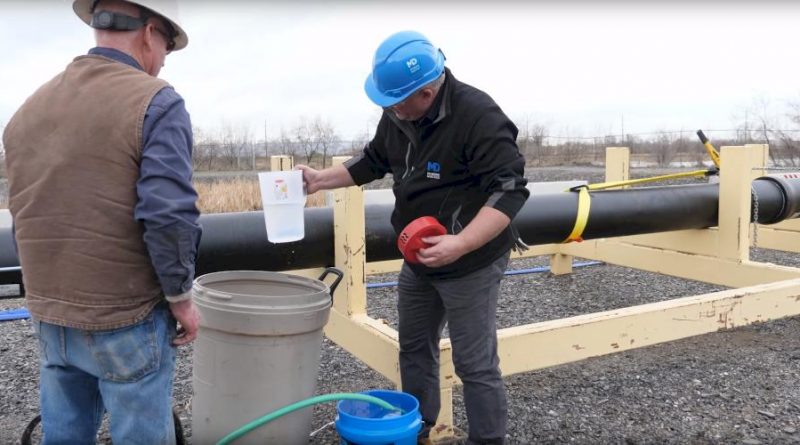How to Select the Best Isolations and Hydrotesting for Your Project?
Selecting the right isolation tool for your project should not be underestimated. In addition to its price, it should also be easy to install. They are easy to install, and the maintenance cost is lower than the market average. Moreover, you can increase your crew’s productivity and eliminate the need for hiring subcontractors.
Preparation for Hydrotesting
If you have a processing industry, you may have many vessels and a complex piping system. Isolations and hydrotesting are essential to ensure the joints and materials used are strong enough to hold the pressure and flow properly through the piping system. Hydrotesting also ensures that older lines are safe and reliable. Some lines are acceptable for operating at higher pressures, while others must undergo retesting to ensure they’re safe and reliable for the highest operating pressures.
When hydrotesting, the pressure in the piping system is always greater than the pressure in operation. That way, the system will never fail during operation. However, pressure gauges must be properly calibrated yearly, and the range should be 1.5 to four times the hydrotest pressure. Another important safety consideration is impure water from ponds and lakes may damage the piping system. It may also cause further leakage.
Before hydrotesting, ensure that the system is properly isolated by using tiger tape or other means of identification. Then, install two pressure gauges at the top of the vessel, which should be independent of the hydrotest pump. Other safety checks include checking gaskets, nuts, and the barricaded area. If necessary, use a wetting agent to reduce air pockets in the system and to equalize strains.
To ensure the safety of the testing process, water used for hydrotesting should be close to the same quality as the drinking water. Companies have checklists and guidelines to cross-check these parameters. Before conducting the hydrotest, the system should be cleaned with a dedicated cleaning system to remove any foreign matter and dirt. In addition to cleaning the system, the pipe or vessel should be dry for visual inspection. The inspector should also prepare a punch list.
Cost of hydrotesting
If you are a homeowner who is unsure if a foundation problem may be the cause of a leaky basement or foundation, hydrostatic testing may be the answer. This type of testing is widely used by homeowners, real estate agents, insurance companies, brokers, and contractors. Anyone can benefit from Isolations and hydrotesting. Hydrostatic testing is one of the most common and cost-effective methods for identifying structural flaws.
Hydrostatic tests for piping systems that handle liquid or vapor identify leaks. These tests are conducted at a pressure typically 50% higher than the design pressure. The lower the pressure, the better, as high-pressure tests can damage the components. The difference between hydrostatic and pneumatic testing is the energy stored per unit volume. A hydrostatic test has a lower energy cost, as water is not compressible. On the other hand, Pneumatic tests use compressed air to determine whether a system can withstand the pressure.
Hydro-testing isolations may not be the most cost-effective option for your needs. In addition to reducing the risk of leaks, they can improve your safety. Unlike traditional hydro-test end caps, flange-welded isolations only require a small amount of water. This can be a major benefit, as it saves time and reduces the environmental impact of hydro-testing isolations.
Hydrostatic testing is a common procedure to detect leaks in an under slab plumbing system. The procedure involves inserting an inflatable test ball into the main sewer line directly under a perimeter beam. Then, water is pumped through the entire system, and water levels are monitored. Water loss over 20 minutes will indicate a leak. If hydrostatic testing indicates a leak, you must pay for leak isolation.
Vital tools
Vital tools Hydrotesting Tools are engineered to provide positive pressure isolation of new welds while they are being installed, welded, or repaired. These tools result in a reduction in overall system downtime and cost. Unlike traditional methods, the isolations and hydrotesting tools are compact, lightweight, and easy to use.
Isolation and Hydrotesting feature a patented high-pressure test dolly that is ergonomically designed for ease of use and mobility. These Isolations and hydrotesting are equipped with multiple pressure test points capable of hydrostatic testing up to 15,000 psi (1,034 bar). These tools are compatible with both metric and standard tube sizes. They can also be used for testing various pressures, ranging from water to oil.
While Choosing hydrotesting tools
One of the first questions you should ask yourself when choosing a hydrotesting tool is: How close should it be to your drinking water? The answer is: close enough to prevent contamination. Fortunately, today’s isolation and test tools are remarkably accurate, and the companies that manufacture them use checklists to cross-check their parameters. If unsure, try performing a hydrostatic test on a small component. A hydrostatic test involves filling the component with water, applying pressure to it for a certain time, and then visually checking for leaks. The process is similar to a leak detection test, but you’ll need specialized isolations to perform a hydrostatic test. Hydrostatic testing can save your company a lot of money when it’s done correctly.

